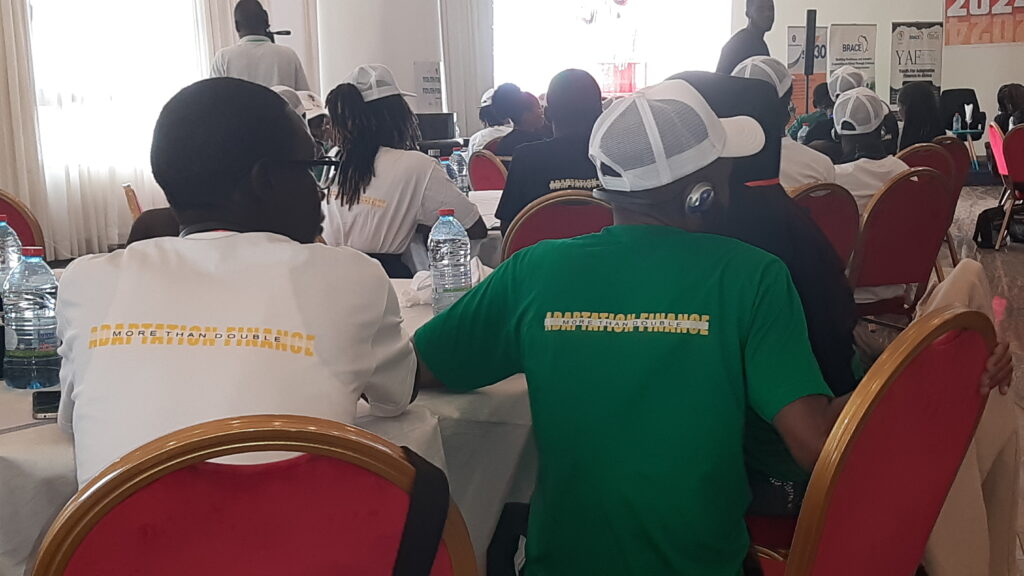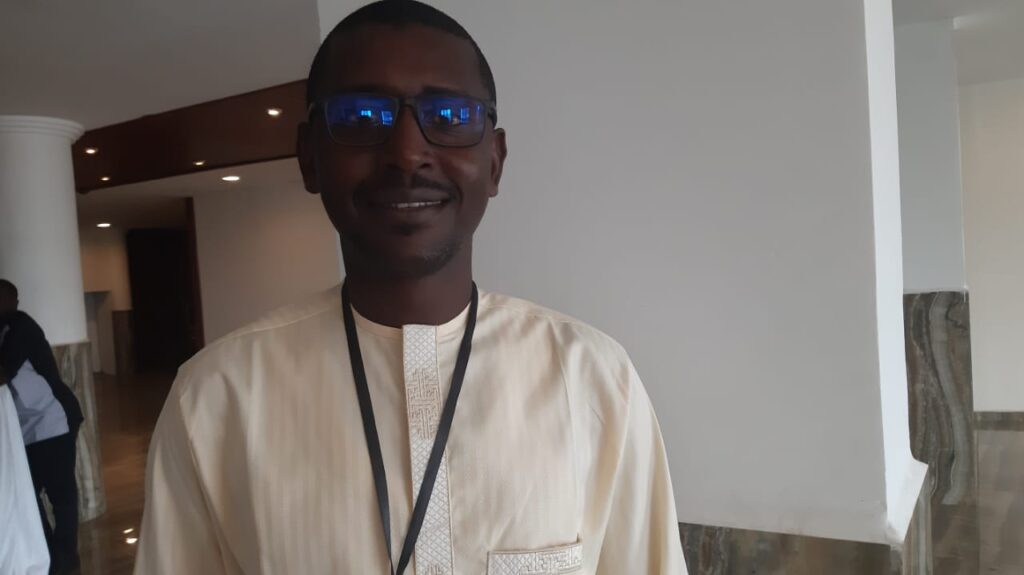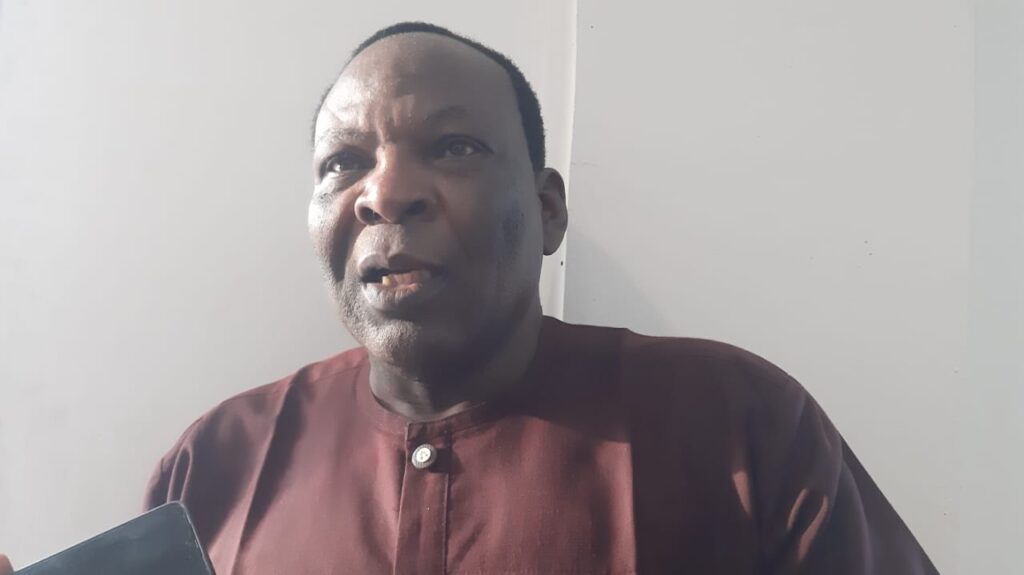Young people in Africa have said they want more money for climate adaptation and energy access.
The youths recalled and reaffirmed “The Yaoundé African Youth Call on More than Doubling Adaptation Finance for a Resilient Africa,” issued during the Inaugural Youth Forum on Adaptation Finance in Africa in 2023, and demanding an increase in the share of adaptation finance in the overall climate finance portfolio, ensuring it is commensurate with the adaptation needs and costs of African countries. They argue that even if the overall adaptation finance is doubled to around $40 billion annually, it would still fall short of the assessed need.

One hundred fifty young leaders from 35 African countries met from October 29 to 31, 2024, in Yaoundé for the second edition of the Forum on Financing Adaptation in Africa (YOFAFA). They say they will present this demand, among others, at the upcoming Conference of Parties, COP 29, from 11 to 22 November 2024.
YOFAFA, an initiative of the African Coalition for Sustainable Energy (ACSEA) and the Pan-African Climate Justice Alliance (PACJA), was organized under the patronage of the Ministry of Environment, Nature Conservation, and Sustainable Development.
Among the participants, Idriss Adoum from Chad, in charge of advocacy and awareness-raising for YOFAFA and the Youth Network for Climate in Africa, says youths have equally added access to energy to their demand for an increase in a fair share of climate adaptation finance.
According to Adoum, the strategy is to channel the demand through national focal points on climate, adaptation, and negotiators. “In Chad, I will hand my declaration to the Secretary of the Governor, the negotiator part of the delegation to COP 29,” he stressed.

“The 6/30 campaign is important, and it is what galvanizes me because I know that if through it there is fundraising, this money will make it possible to provide energy even to the most remote areas and thus fight against deaths due to lack of electricity in hospitals,” he reassures.
According to the latter, Chadians are turning to solar energy because of the low electrification rate (6.34%). However, due to the very low purchasing power of the citizens of this central African country, which has approximately 17 million inhabitants, they still can’t afford it.
Why increase climate adaptation and energy finance?
The demand for more funding for climate adaptation stems from the Paris Agreement with a global target for addressing the impact of climate change. At COP26, new financial pledges were made to help developing nations achieve this target. Furthermore, new rules for international carbon trading mechanisms (“Article 6”) were established at COP26 to promote adaptation finance.
However, according to young advocates and activists, Africa faces a severe and urgent shortfall in funding for climate change adaptation, even as the costs of delayed action rise. The United Nations Environment Programme Finance Initiative indicates that financing is a major barrier to climate adaptation. UNEP’s 2022 Adaptation Gap Report estimates that the annual cost of adaptation in developing countries alone will be between $160 and $340 billion by 2030, suggesting public budgets will not address the financing challenge alone.
It is estimated that Africa needs about 212 billion per year for adaptation in developing countries till 2030. The amount will increase to 239 billion annually between 2030 and 2050. It is estimated that the continent needs 1.1 trillion per year for adaptation, explains Nforngwa Eugene, ACSEA program manager.
According to Nforngaw, the estimate is based on national adaptation plans, country project budgets, and investments needed to develop adaptation capacity on the continent.

The adaptation needs of Africa are enormous, yet Africa is not receiving enough adaptation finance, he laments. “The continent is receiving only about 14% of global adaptation finance, which is also very small, a little over 20 billion dollars annually. Based on this discrepancy between the needs, the actual adaptation, and finance flows, young people have focused on adaptation finance as central, advocating for an increase in substantial and adequate adaptation finance.
Nforngwa explains the centrality of energy access to adaptation finance.
The nexus between adaptive capacities and energy is very clear in the sense that energy is primarily a source of vulnerability. Communities that lack energy are unlikely to have the capacity to respond properly to the impact of climate change. Energy access is amplifying climate vulnerability, and climate vulnerability is amplifying energy poverty. An example is Cameroon, a country dependent on hydroelectric production, which is a climate-reliant form of energy. In 2010, Cameroon had some of its worst shortages in energy supply because there was no water in the dams. “If Africa does not consider the link between energy and climate change and address it as an issue of adaptation, then the continent is losing out on an area of utmost impact in investing in climate finance,” he warned.
There has been an increasing debate on whether Africa should find innovative ways of financing adaptation and energy access.
Nforngwa says African governments are using their national budgets to address climate change impacts, and studies show that African countries are using five times their health budgets to address climate change issues through their national projects.
He says ACSEA is exploring how to leverage African private sector resources through the corporate social responsibility of African corporations. ACSEA encourages companies to fulfill their corporate social responsibility to invest increasingly in climate change adaptation.
There is also a need to leverage African philanthropy as a source of financing that is not fully developed, he suggests. “We have foundations in Africa that provide resources for all kinds of development work on the continent. Examples are the Mo Ibrahim and Tony Olumelu and the MTN Foundations showing interest in investing in energy access on the continent.” Nformgwa said.
In April last year, ACSEA launched the 6/30 campaign. The argument is that 630 million people approximately in Africa lack access to electricity, and 630 billion dollars would be the amount needed to provide clean energy in the continent. ACSEA is striving to mobilize all of these funding opportunities to invest in energy access for communities.
Clean energy offers opportunities for youths.
During the forum, Prof. Julius Kewir Tanka 30 displayed clean energy prototypes, “encouraging young people to delve into renewable energy.”
With the solar energy project in Nigeria, Dr. Godwin Ojo said, “Young people, it is time to use renewable energy technologies and develop creative business abilities. Bringing these materials into Africa is insufficient.”


